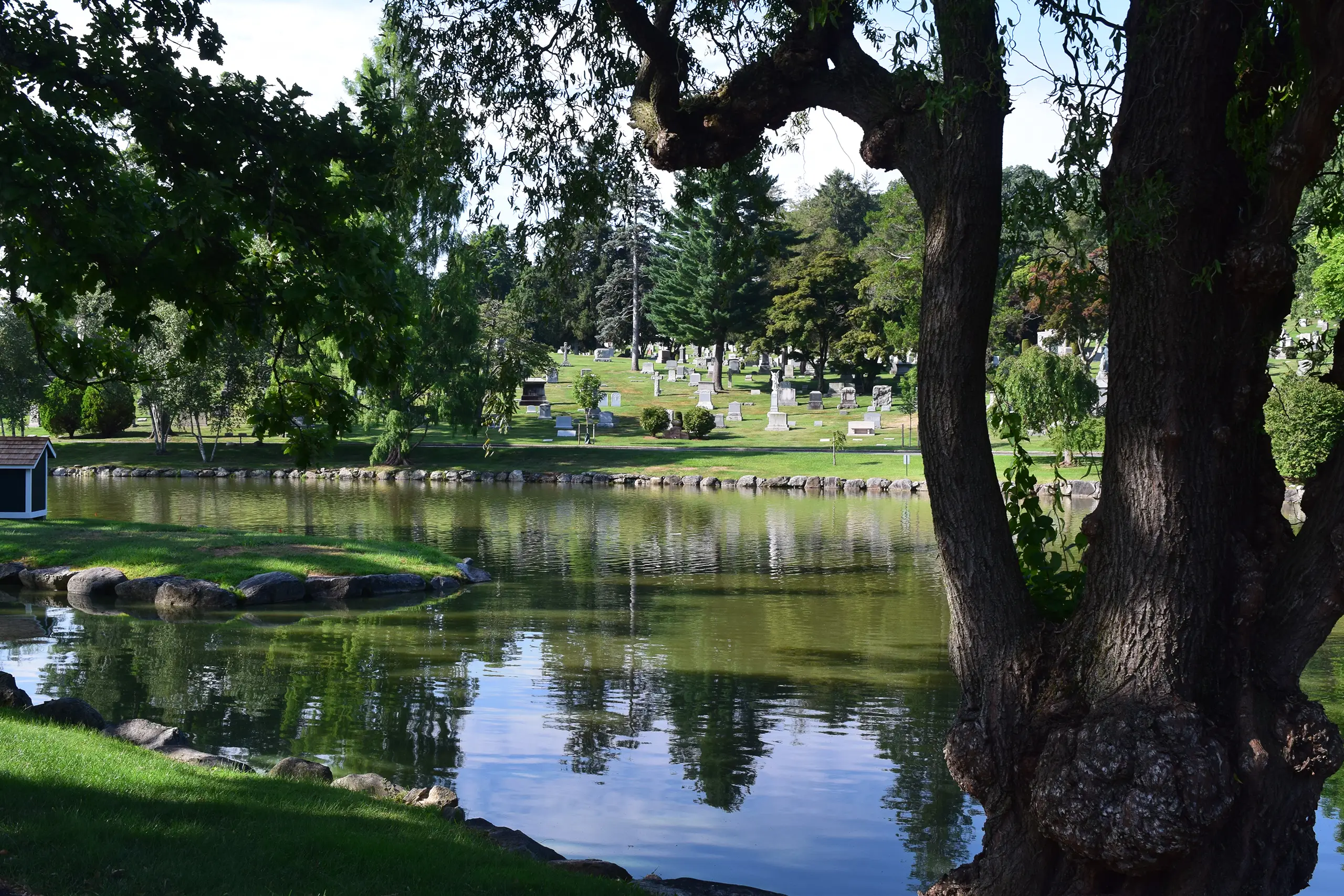Kensico Cemetery dedicated the Garden Mausoleum at Montross Pond on Tuesday, May 24 to celebrate and commemorate the first construction for above-ground burials at Kensico Cemetery in almost one hundred years.
Attended by former Kensico presidents, board members, current employees and retirees, officials from other cemeteries, and special guests, the program included remarks by those involved in the planning, project management, and landscaping, as well as thoughts on the Garden Mausoleum’s significance in Kensico’s history. Portions of the ceremony highlighted the work of some of the notable figures buried at Kensico.
The playing of “Rhapsody on the Theme of Pagnini” by Russian composer Sergei Rachmaninoff (buried at Kensico Cemetery) provided the prelude to the official ceremony.
Kensico President Mathew G. Parisi welcomed the audience, thanked the event organizers, previewed the program highlights, and pointed out the significance of the dedication, not only as part of Kensico history, but what it will mean to the Kensico families that choose to be entombed there.
In her blessing that followed, Kensico Board Member and Pastor Elizabeth Payne led the audience in a recitation of the hymn “Haven of Blessing” composed by Hart P. Danks who is buried at Kensico Cemetery.
In a statement from Henry R. Barrett III, former president, and grandson of Henry Barrett who dedicated the Community Mausoleum at Kensico in 1925, Mr. Barrett wrote: “These two events—-these two buildings a century apart—-remind us that Kensico Cemetery is dedicated to generations yet to come. Decades from now, centuries from now, the families of loved ones buried here may return to honor their ancestors. But even when families are not around to visit, Kensico Cemetery is here to stand in their stead, maintaining and protecting their gravesites in respect for the memories they hold.”
In his remarks about the historical significance of the new Mausoleum, Chester S. Day, Chairman of the Kensico Board of Directors referred to Kensico Cemetery’s beginnings: “Kensico was organized as a rural cemetery in 1889. In that year—-may I quote—-‘the comptroller was authorized to hire some men, buy some horses, carts and tools to make a beginning.’ “As we gather here today, we start to see the whole picture come together. It has been quite a journey, not only with the development of the land in a park-like setting, but also the Kensico features seen throughout the grounds.”
Recounting the history of the construction project, former Kensico President Raymond M. Planell said, “The process from the discussion/analysis phase through completion covered approximately six years, but we consider this project, this building, to be a continuation of the plans developed by our predecessors over decades and designed to fit with other Cemetery structures, particularly the Kensico Tower.”
Describing the landscaping philosophy, Kensico Vice Chairman Richard Schnall said, “The trees and shrubs were selected not only for their structure, leaves, flowers and fruits, but also because they are native to the area of America from Georgia to Maine and west to the Mississippi River. Also close by is a 5 acre woodland and stream that the Cemetery has been working on for many years to create a native plant woodland free of invasive non-native plants. Over time it made sense to use native plants for the landscape of the Garden Mausoleum. In addition, the Garden Mausoleum with its strong architectural lines, sharp corners and use of stone called out for softening by using evergreen broadleaf and needled shrubs. Evergreen were selected because they are present year round.”
Kensico Board Member Elizabeth Payne then closed the ceremony with allusions to the meanings of light and along with Board Member Catherine U. Biddle distributed lights of remembrance to place inside the Mausoleum. “Deep Purple” by Peter DeRose and his wife May Singhi Breen (both buried at Kensico) was played as the audience entered the Mausoleum for the guided walk-throughs.
Light refreshments followed and were adapted from menu selections from the Four Seasons restaurant (Circa 1970 NYC)—a tribute to Joseph Baum, restauranteur buried at Kensico.
About the Garden Mausoleum: Over 100’ in length, 68’ wide and with a roof rising 18’ at the center, the new granite and stone Garden Mausoleum is an open-air structure with no windows or doors, allowing easy access by families and friends to the crypts and niches. The goal of the design was to create a serene atmosphere overlooking the beautiful pond and fountains while maximizing natural light and affording protection from the weather.
Date Posted: June 9, 2022

March 4, 2024
Kensico Cemetery’s Arboretum Achieves Level II Status
Kensico Cemetery’s Arboretum Achieves Level II Status The Only Cemetery in Westchester County with that Designation Kensico Cemetery, located in Valhalla, NY announced its recent achievement of Level II Arboretum status, continuing its commitment to enhancing its natural landscapes and fostering an environment of remembrance. This elevation marks a significant milestone, positioning Kensico Cemetery as [...]